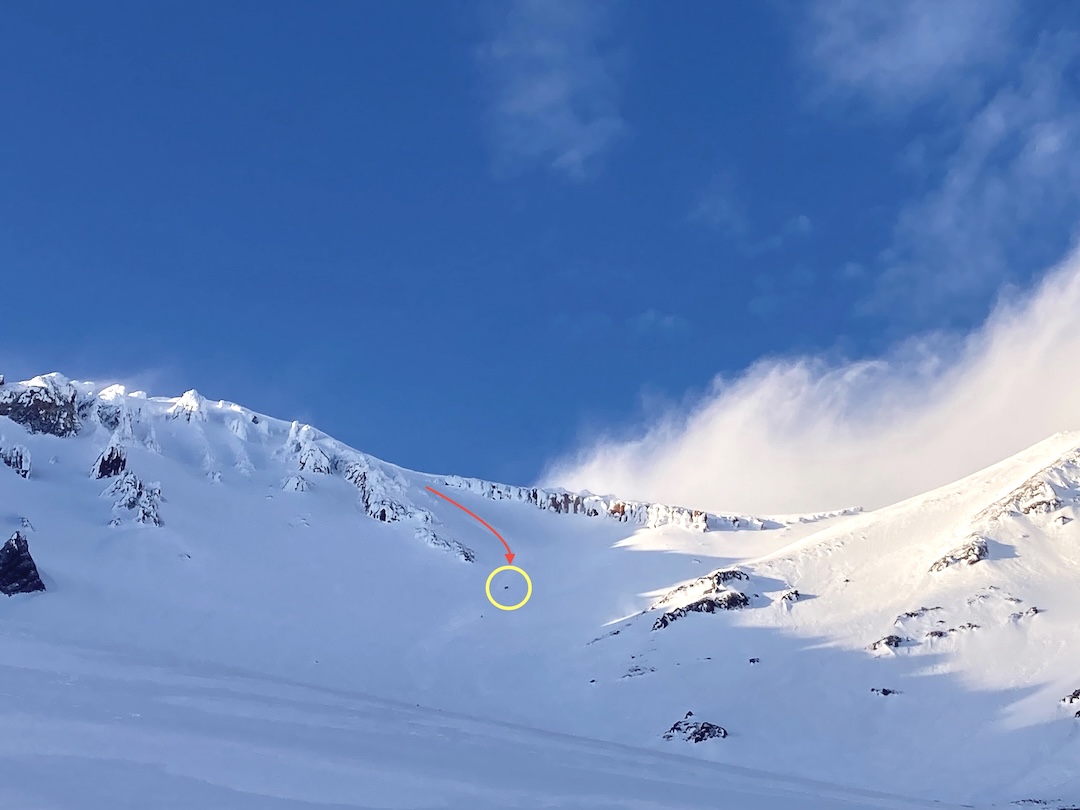Avalanche
California, Mt. Shasta, Avalanche Gulch

On April 27, two experienced splitboard mountaineers were ascending Avalanche Gulch on Mt. Shasta. The plan was to use this popular route to summit and descend. Around mid-day, they triggered a wind slab avalanche in a feature called the Heart (13,000 feet).
Both people were caught in the avalanche, but neither was buried. Spaced about 20 feet apart, the higher climber (SB 1) arrested his fall near the top of the slab, while the lower climber (SB 2) was carried approximately 1,000 vertical feet downslope. Once the avalanche came to a stop, SB 1 realized he had a knee injury. Nonetheless, he was able to sideslip down to SB 2, who had sustained a broken femur and large puncture and laceration to the lower leg and ribs. Attempts were made to descend but were prevented by intense pain. The pair opted for rescue at 12,200 feet and called 911 at 12:20 p.m.
Siskiyou County SAR, USFS climbing rangers, and the California Highway Patrol (CHP) responded quickly. Conditions for helicopter use were poor due to a whiteout above treeline. Aerial evacuation was attempted, but it was soon clear that ground transport was the only viable option.
The helicopter was able to insert two rescuers to the treeline at about 8,000 feet. After a climb in whiteout conditions, they reached the injured party in several hours. Numerous outfitter mountain guides, who were training on Shasta, also responded up Avalanche Gulch. SB 2 was packaged for a carry-out, and an arduous four-mile evacuation brought the climber down to Bunny Flat trailhead at 6,950 feet.
ANALYSIS
The two splitboarders were skilled mountaineers and very familiar with the terrain. However, the conditions were volatile and challenging. Although there had not been much new snow in the days leading up to the avalanche, strong winds in the upper elevations had blown snow onto the aspect the climbers were ascending.
This wind loading, paired with poor visibility, put the climbers in an unexpected situation, and they did not identify the avalanche hazards before it was too late. When conditions change and visibility diminishes, good observations and decisions become more difficult.
Similarly, with decreased visibility and increased wind, SAR response becomes much more challenging. It was good that the team originally attempted to self-rescue. But following their distress call, the wait was six hours for rescue arrival and six more hours for extraction. When injured and stationary for such an extended interval, frostbite and hypothermia become hazards. While traveling in the alpine, it is imperative to consider the secondary consequences of any accident and pack accordingly. (Source: Mt. Shasta Climbing Rangers.)

